By Niki Waldegrave
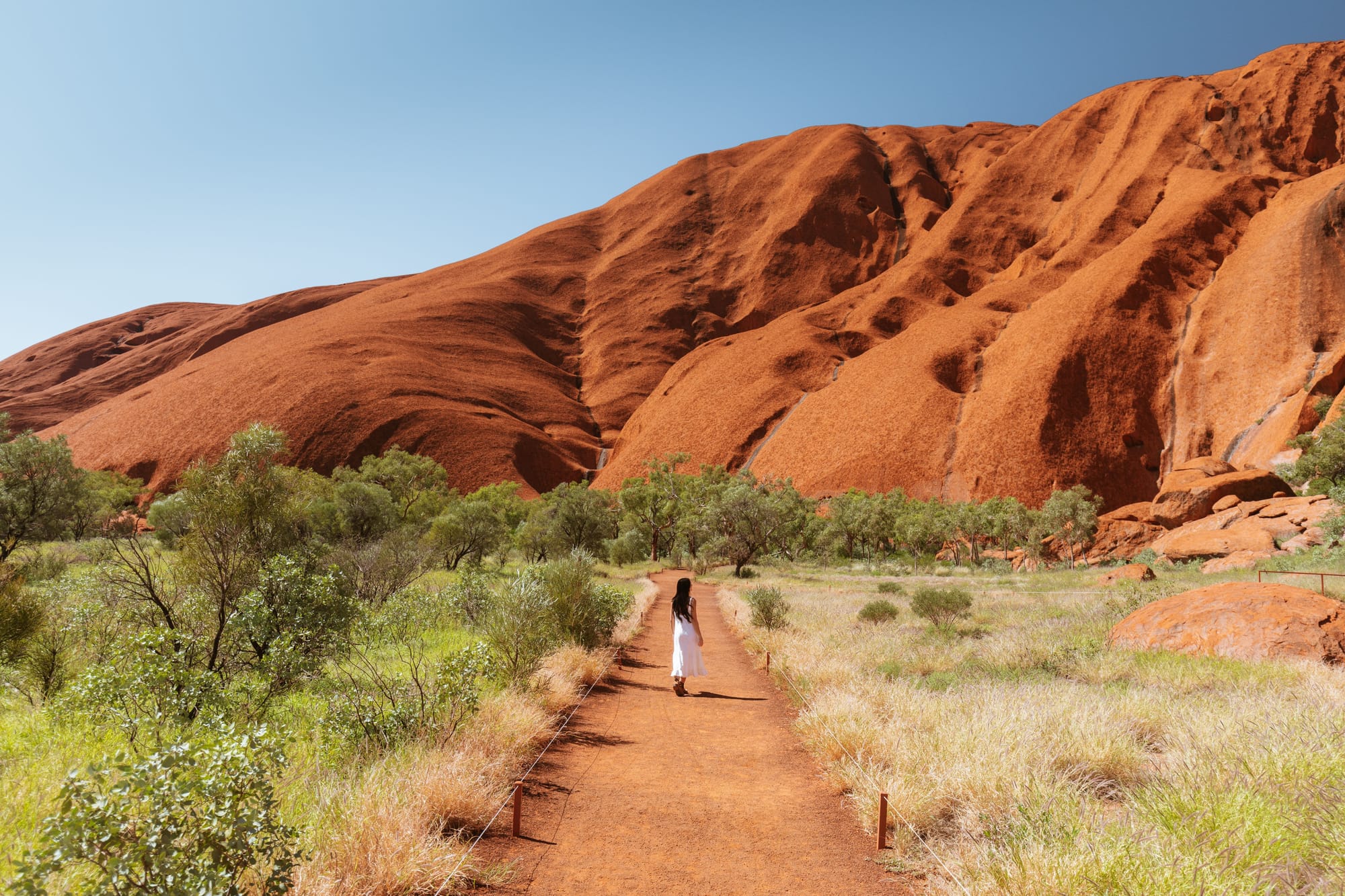
“PUT YOUR BALLS in the tank,” isn't something said to me often, but I like it.
Buzzing around the outback on a quad bike, dodging lethal spinifex, low-lying branches, wild buffalo, brumbies and the odd stray camel at Kings Creek Station – a 1,800-square-metre working cattle and camel ranch outside the Northern Territory's Watarrka National Park – is not for the faint-hearted.
Guide Steve insists the best way to remain stable on the quads is by sitting up high towards the front near the handlebars, literally with your "balls" — men, generally, – "in the tank".
Who knew?
Whether you're a petrol-head or not, the stunning 360-degree panoramic scenery of the George Gill Range, rolling dunes, desert oaks and wildlife is breathtaking.
Steve is a walking outback encyclopaedia, pointing out all the cleverly disguised flora and fauna in the region and lets slip curious dingoes and kangaroos often pitch up for the overnight tours.

Other tours include the 1-hour Karrke Aboriginal Cultural Experience, complete with seasonal bush tucker food, including the Witchetty Grub.
While some people are cut out for camping au natural, it’s not me. Glamping in a motorhome with air-con, shower and toilet? Now you're talking!
If you have always wanted to travel the Red Centre Way – from Alice Springs to Uluru, Kata Tjuta (The Olgas), Kings Canyon and the outback but don’t fancy camping … or are a bit of a princess – a motorhome is a banging way to do it.
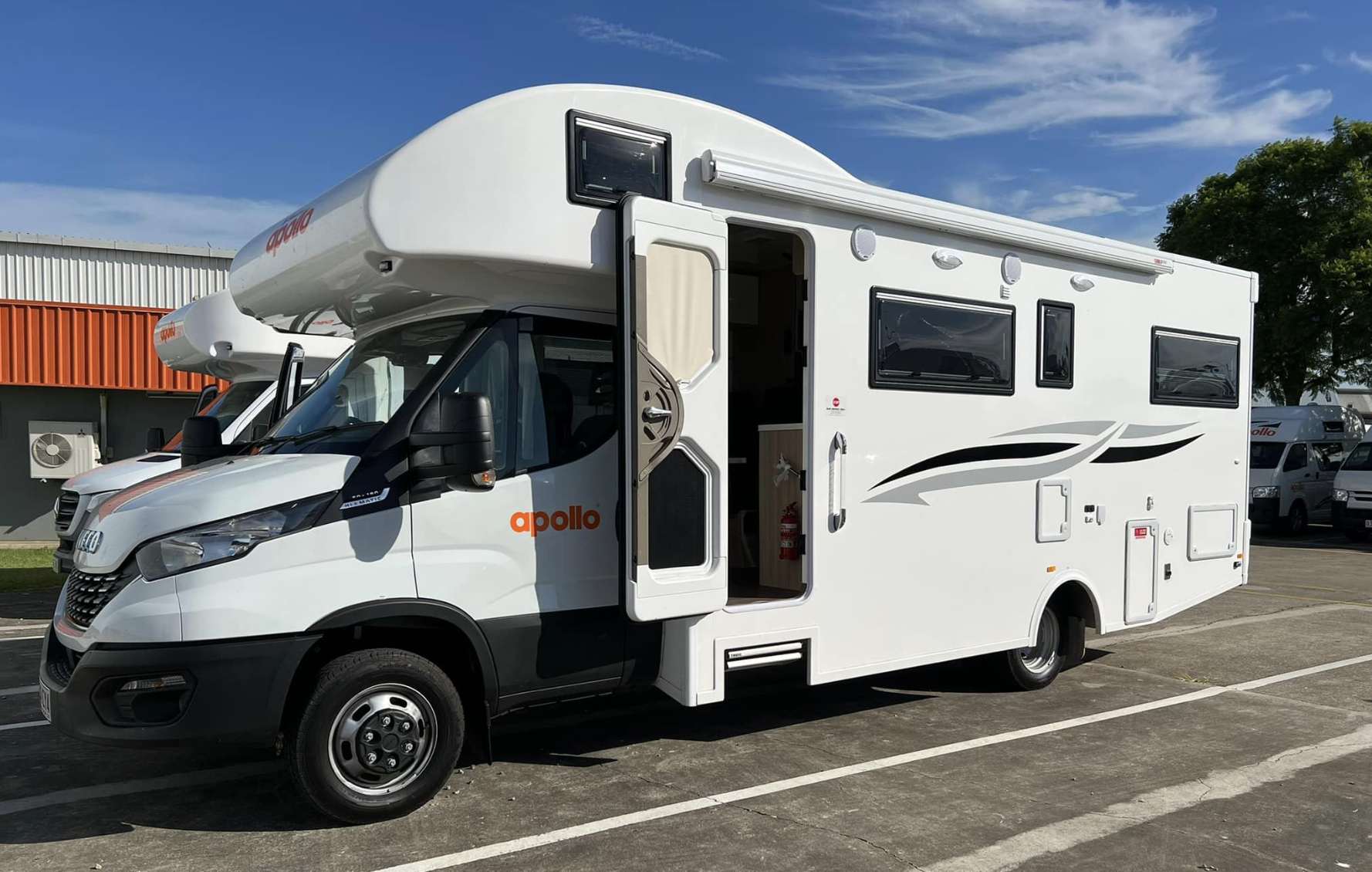
DAY 1
Most Australian metro cities have daily flights to Alice Springs, are pain-free, and land you deep in the heart of the outback and its rich Aboriginal culture.
The Arrernte – sometimes referred to as the Aranda, Arunta or Arrarnta – people are the traditional owners of the region, which incorporates Alice Springs and East MacDonnell Ranges, and have lived here for thousands of years.
On landing, we get a shuttle bus to motorhome company Apollo to collect our ride for the next few days. Forget your clapped-out utes, this six-berth Mercedes Euro Deluxe model has been accessorised to the max. With three large double-bed sleeping areas, it's the perfect tourer for large families.

Supplies are sketchy on the 4.5-hour drive to Uluru, so a trip to the well-stocked Woolworths and Coles in Alice Springs' Yeperenye Shopping Centre is imperative.
Travelling to Uluru through Rainbow Valley and along the Stuart and Lasseter highways at dusk is something else, and the silhouettes of kangaroos, camels, wild horses and buffalos on the horizon are stunning. Proper ‘Australia’.
Ayers Rock Campground boasts a range of facilities, including art galleries, a swimming pool, playground, restaurants and a supermarket, and it’s a handy 15 kilometres from Uluru.
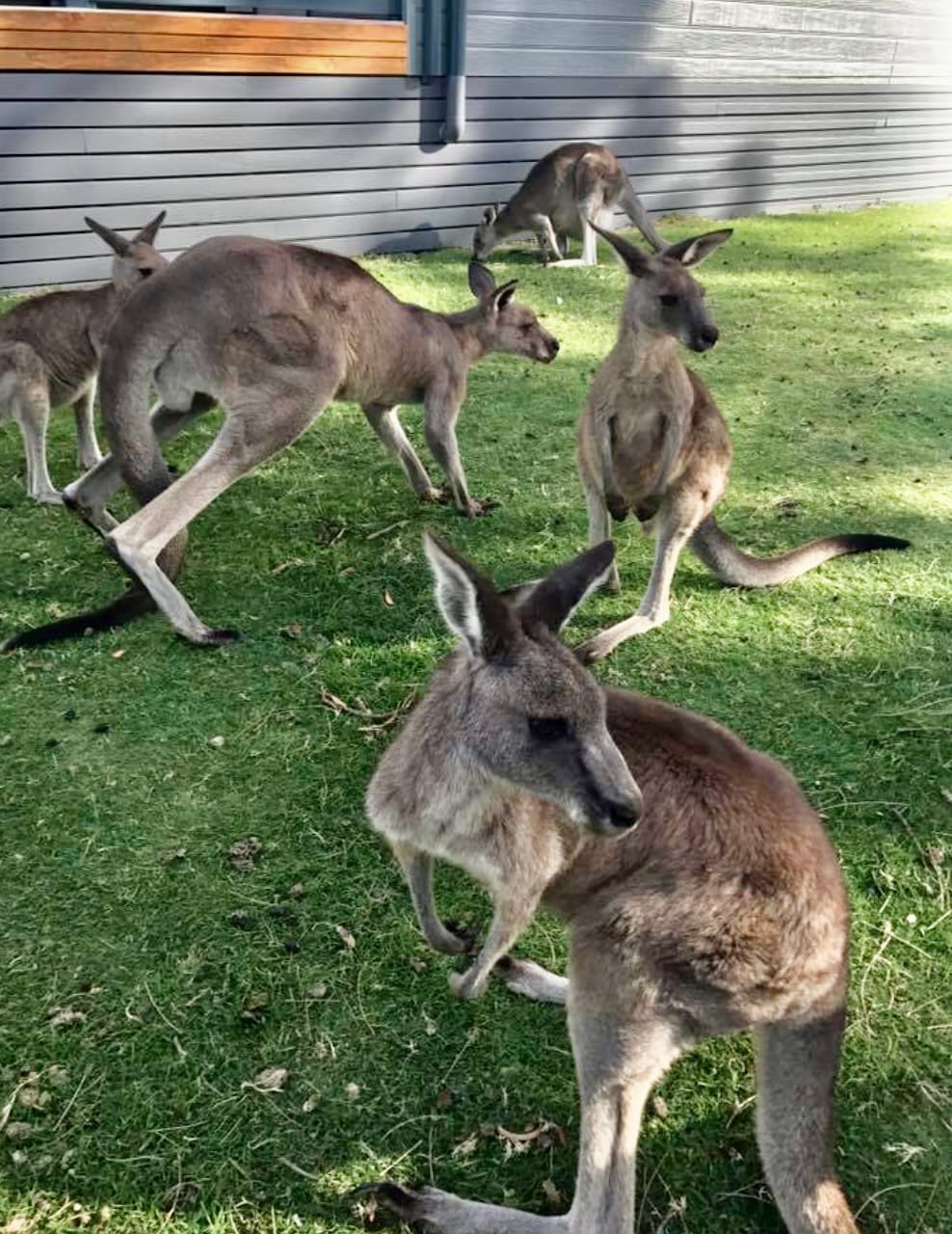
DAY 2
At 5.15am we meet the SEIT Uluru Highlights bus for the Sunrise Tour. It's still dark, with thousands of stars twinkling above, as we present our passes at the halfway entrance.
Uluru is sacred to the Pitjantjatjara Anangu people are the traditional owners – the Aboriginal people of the area.
Anangu means 'We, the people' and its culture, which dates back more than 40,000 years, is considered one of the oldest in the world.
In 1985, the Anangu agreed to lease the national park to Parks Australia for 99 years as long as it, and all visitors, abide by the Anangu's Tjukurpa laws (relating to the Creation period), which encompass their way of life, religion, beliefs, moral systems and the relationships between people, plants, animals and the physical features of its land.
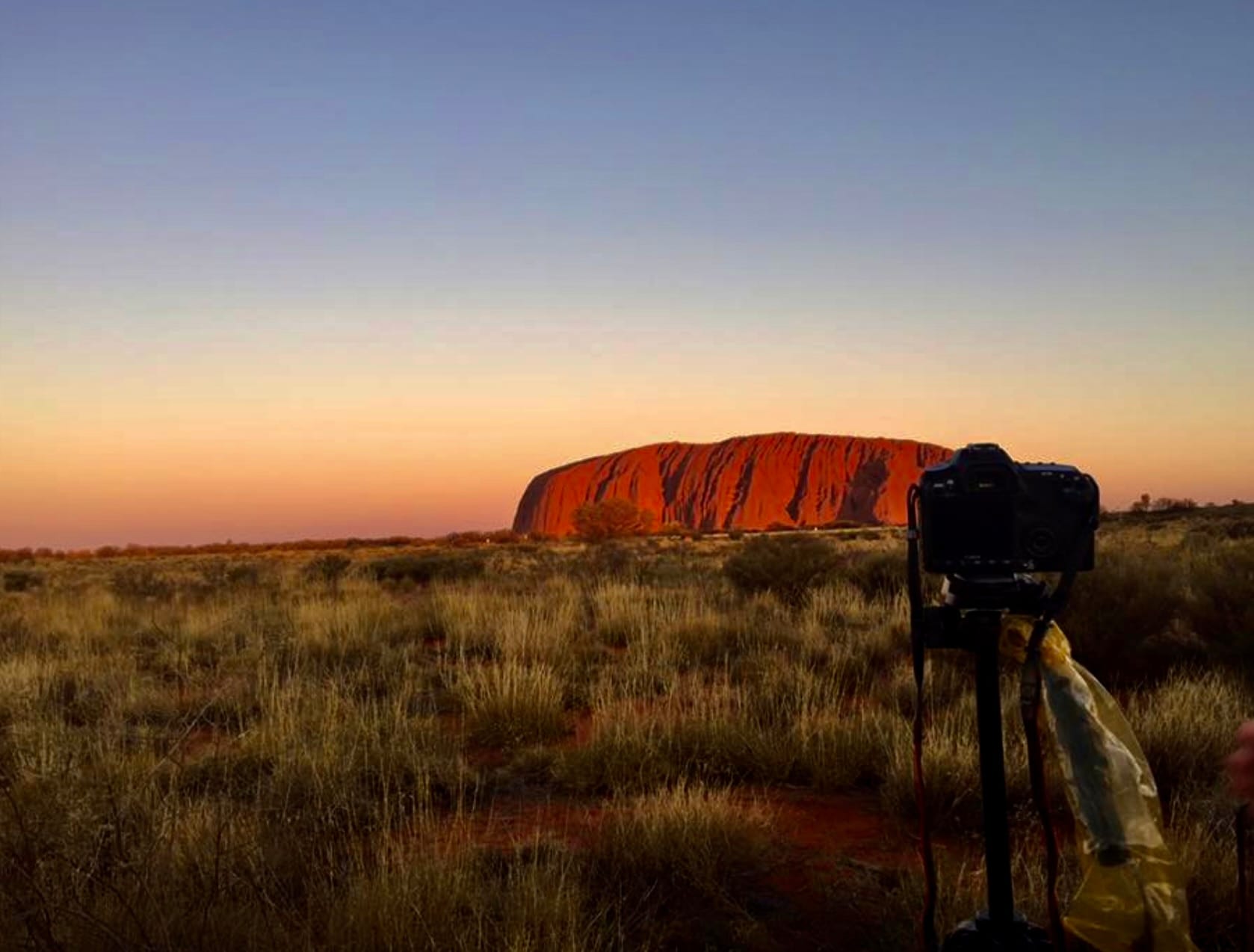
We’re regaled of some of the Anangu laws and Creation stories involving the poisonous snake Liru and the python Kuniya. We also learn how Anangu live off the land and control bushfires.
As our guide says, “When we have a problem, we always look at it through the lens of Tjukurpa.”
Approaching Uluru, everyone falls silent as we approach the magnificent monolith, which bursts into a melting pot of neon and pastel pinks and orange against the sun rising sun.
Wow. Recognised as one of the World Heritage Sites, it is one of the seven wonders of Oceania. An incredibly unique structure in the middle of an ever-ending flat part of the country, the isolated mass of weathered rock is 863 metres above sea level, with a nine-kilometre circumference.
It's not just mesmerising, it's colossal.
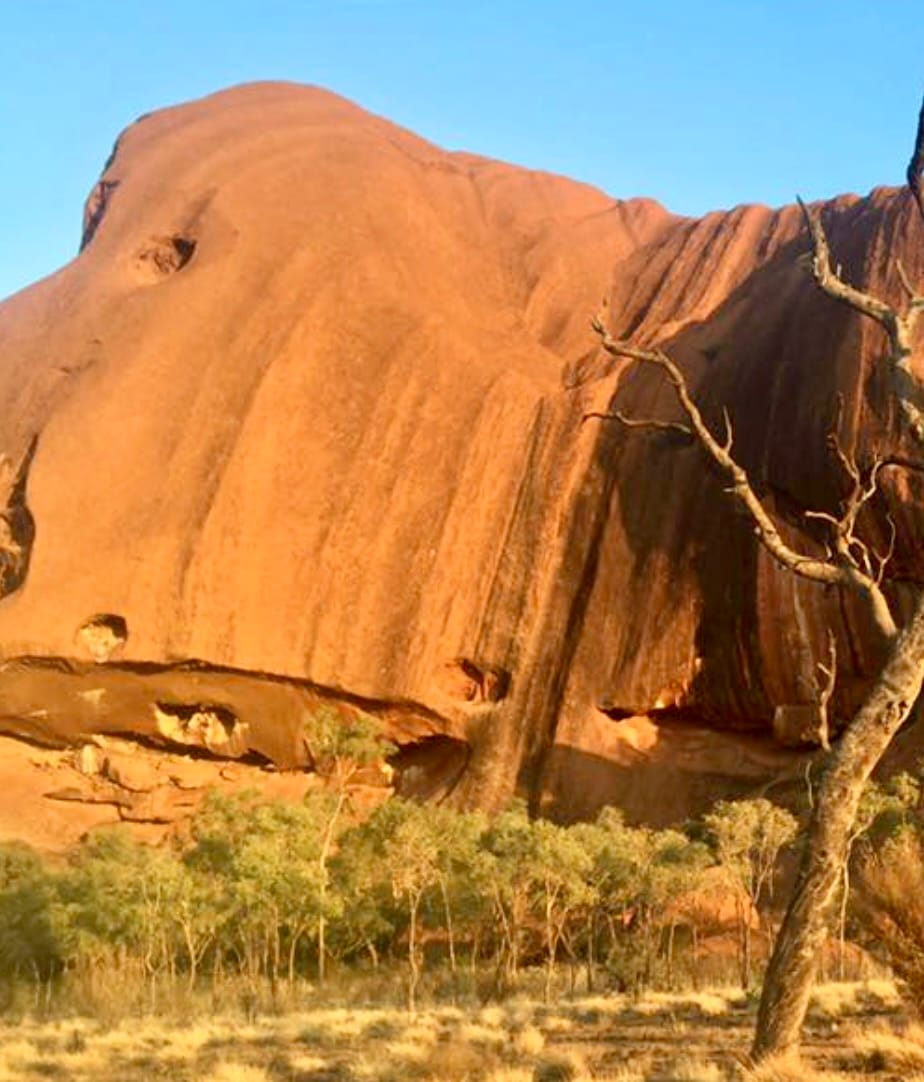
Surprisingly, Uluru houses a fertile oasis of watering holes, caves, wildlife and vegetation, but is so dry that only one per cent of visitors have ever seen rain fall on it.
When it does, and a moody Uluru emerges from the fog, the arid desert explodes with colour and life, and water cascades down its sides, filling its watering holes.
We explore caves where ancient Aboriginal art illustrating the Tjukurpa laws adorns the walls, and further around Uluru, our guides point out a walking trail with a small chain leading up to the top. Anangu traditional law forbids climbing the rock, and over the years, 37 people lost their lives climbing through the manmade scar, with many more needing rescuing.
They say the law teaches them the correct way to behave, and ask that visitors respect this. In addition to being sacred, locals fear for the safety of visitors.
Their laws state that it is their job to look after the land and the people who visit it, and the boulders halfway have been dubbed 'chicken rock'. because in the past people would get as far as them, and decide they didn't want to continue.
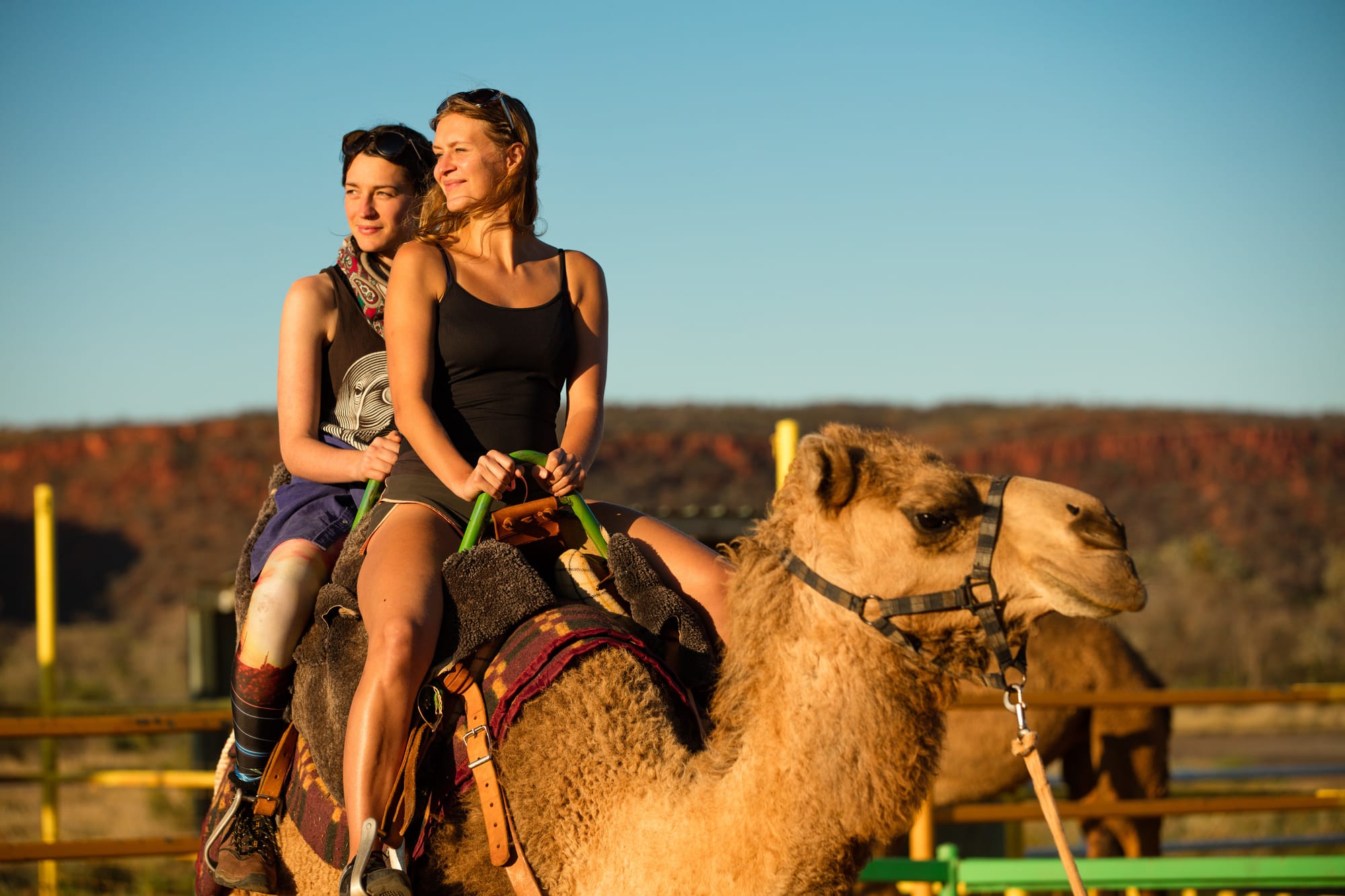
Australia has the world’s largest population of wild camels and while you can spot them all around the NT, the sunset camel tour is a ‘must do’ for many tourists.
Introduced to the Outback in the 1880s, camels – like kangaroos – are regarded as pests. Apparently, they're not bred in captivity “because the hand-reared ones have delusions of grandeur and are especially hard to train”.
We meet Randy, the record-holding ex-racer from Uluru Camel Tours, and his four-legged mate, lead camel Ned Kelly, who made his acting debut in the film Australia.
Randy tells us how tourists on the one-hour trip are immersed in the scenic backdrop of Uluru and Kata Tjuta, 30 kilometres away to the west, which becomes a rainbow of bronze and gold.

Uluru is sandstone, whereas Kata Tjuta has a chemical composition similar to granite, and both are coated with iron oxide, giving them their rusty appearance.
Incidentally, from a certain angle, Kata Tjuta looks like a side profile of Homer Simpson's head. On returning, thirsty camel riders are greeted with locally produced wine, beer and freshly baked beer damper.
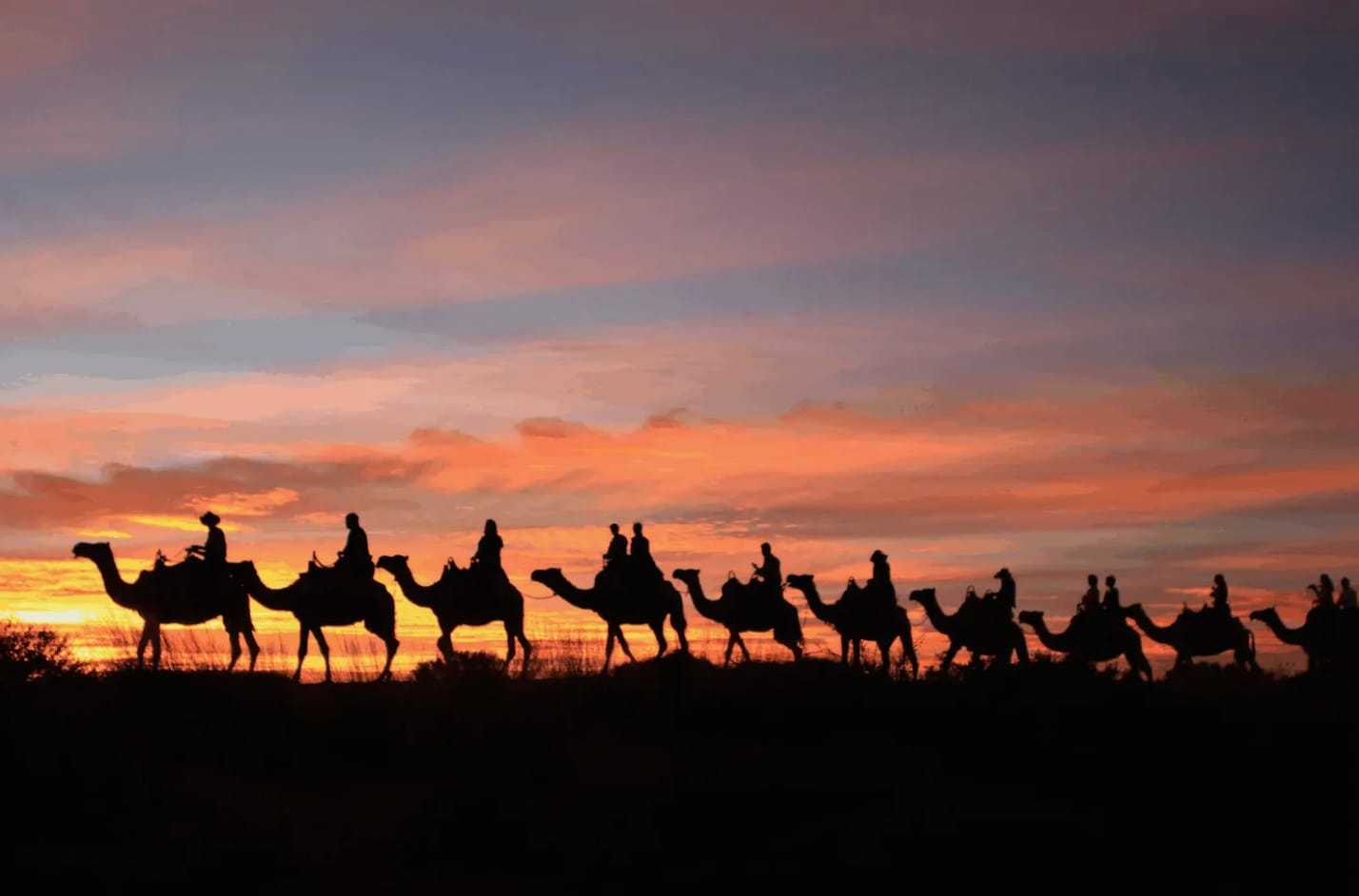
DAY 3
AAT Kings' Kata Tjuta and Uluru Sacred Sites & Sunset Tour with BBQ Under the Stars dinner is another NT highlight through a 2.6-kilometre walk bursting with greenery.
Walpa (meaning windy) Gorge is the first lookout point at Kata Tjuta, from which you can see both Western and South Australia. Geologists claim this area was under sea level between 600 and 900 million years ago – it may even have once been the start of the Himalayas! – and is now 1,066 metres above sea level.
Diners feast on fine cuts of kangaroo, beef, lamb and fish in the shadow of Uluru as the guides pinpoint all the planets and constellations in the night sky with a laser, with local artists showcasing original Anangu art, which is available for purchase.
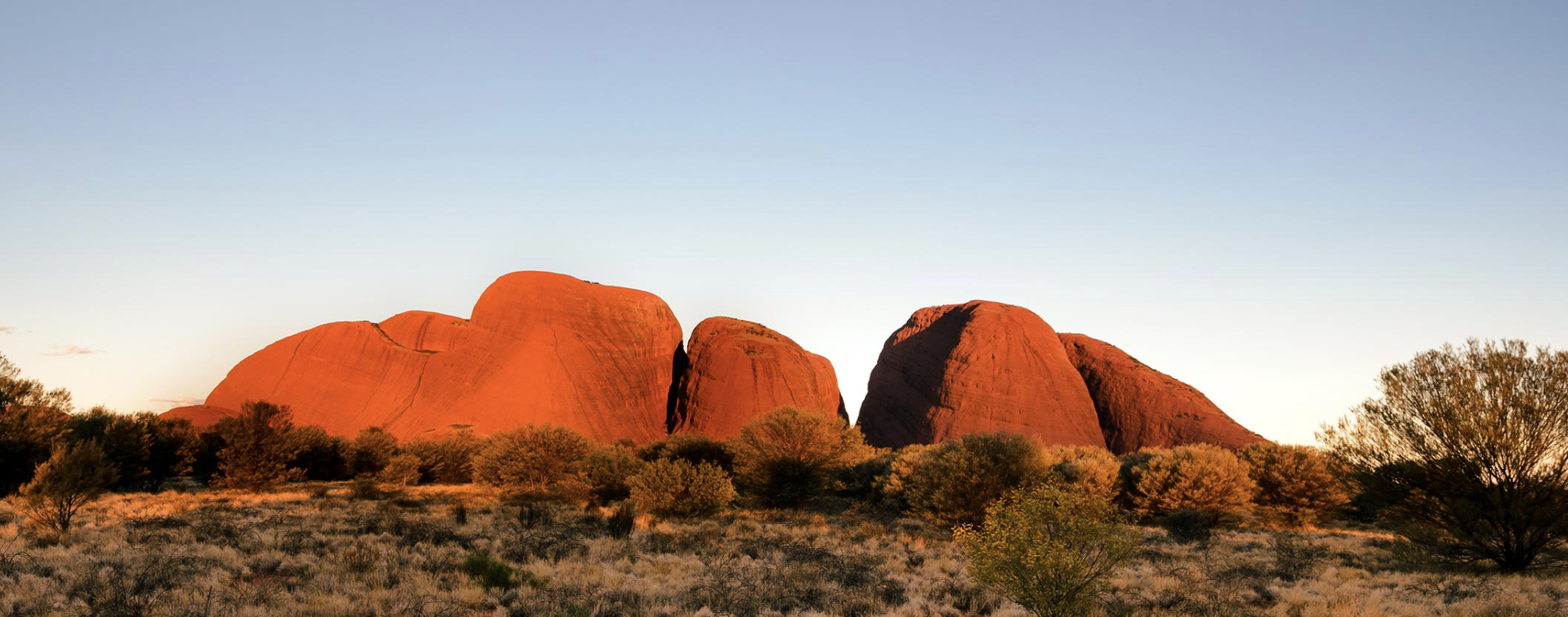
DAY 4
There's plenty to keep visitors occupied at Kings Creek Station, with helicopter rides and camel tours, as well as the aforementioned quad biking.
Our journey on four wheels was six kilometres as the crow flies, but more like 10 kilometres when considering the bends and bumpy terrain. Note to the ladies: wear a bra!
For steak lovers, head to the nearby Kings Canyon Caravan & Holiday Park. With live music on every night, the atmosphere is buzzing and dingos-a-plenty and close to the famous Rim and Kings Creek walks.
Day 5
The six-kilometre Kings Creek Walk is the easiest of the two walks available and suitable for all ages, and kicking off with 500 steps, the view from the ‘Garden of Eden’ is worth every step.
Day 6
Desert Oaks Bistro provides a hearty breakfast and we have a large feast to prepare ourselves for the 4.5-hour drive to Alice Springs, checking into the Big4 MacDonnell Range Holiday Park happier, browner (although that could be the red dust?) and more informed about this wonderful country we call home.

ROUND-UP
GO
- There are daily flights to Alice Springs and Uluru.
- A six-berth Euro Deluxe motorhome from Apollo starts from $230 a day.
- Uluru-Kata Tjuta National Park entry tickets are $25 for visitors 16 years and over and valid for three consecutive days.
EAT
In Alice Springs, visit The Overlanders Steakhouse Barra, Todd Restaurant and Bar, Red Ochre Grill Restaurant, The Red Sands Cafe and The Juicy Rump.
DO
Recommended tours are Quad Safaris at Kings Creek Station, SEIT Uluru Sunset tour, Camel Tours, and AAT Kings’ Kata Tjuta & Uluru Sunset & Aussie BBQ Under The Stars.
More info: tourismnt.com
Thank you for reading and make sure to subscribe. We're constantly exploring new destinations and share our stories, tips, and the beauty we discover along the way.



